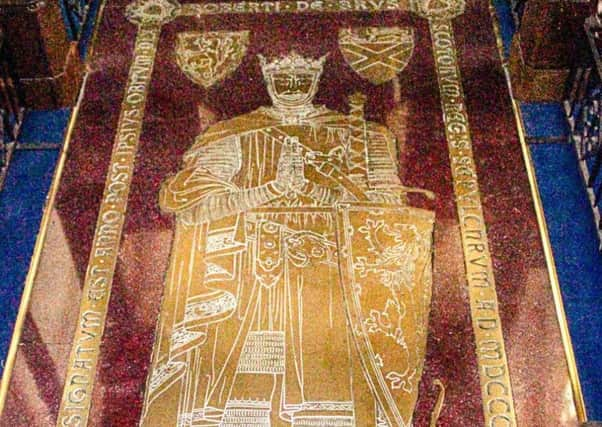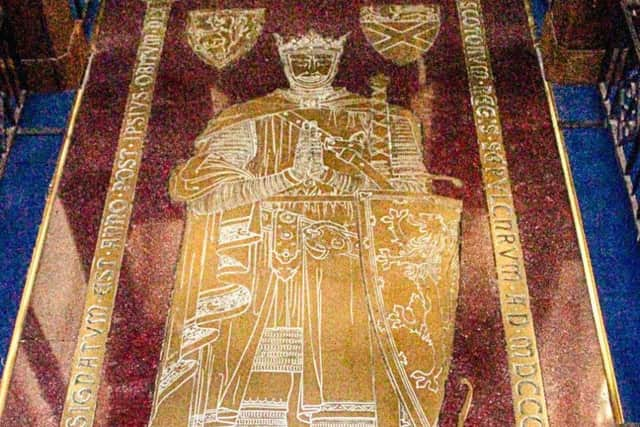Dunfermline celebrates discovery of Robert the Bruce remains


Now 200 years on from that remarkable day when the remains of King Robert the Bruce were found covered in lead and wrapped in a golden shroud on 17 February 1818, the event is to be celebrated with a special event allowing people to visit his tomb behind the pulpit of Abbey Church this Saturday.
Visitors can usually only see the tomb from March to October each year.
Advertisement
Hide AdThe Rt Rev Dr Derek Browning, Moderator of the General Assembly of the Church of Scotland, will preach at a special service this Sunday marking the occasion.


This will be followed by a special lunch at the town’s Glen Pavilion where a new appeal will be launched to help refugees as well as support the restoration fund of the Abbey Church which has a legacy as a place of sanctuary and refuge.
David Bradwell, refugee co-ordinator for Scottish Faiths Action for Refugees, will deliver an address entitled When I Needed A Neighbour.
Robert the Bruce (1274-1329) took the Scottish throne in 1306, but a year later was deposed by Edward I and forced to flee.
His enduring legacy is his victory over the English under Edward II at the Battle of Bannockburn in June 1314 – re-establishing the Scottish monarchy – and his fight for Scottish independence leading to the Declaration of Arbroath.


In 1819, the remains were examined by James Gregory and Alexander Munro, professor of anatomy at Edinburgh University, who found the sternum has been sawn open to remove the King’s heart.
Advertisement
Hide AdMeasurements showed Robert the Bruce would have been around 6ft 1 in, unusual in medieval times. His remains were re-interred in the Abbey on 5 November, 1819.
The Rev MaryAnn Rennie, minister at Dunfermline Abbey, said: “This is the first of a series of significant anniversaries in the life of the historic Abbey church, a constant presence in the life of Dunfermline and Scotland for over a thousand years.
Advertisement
Hide Ad“We look forward to welcoming as many people as possible to mark this important and historic anniversary in the life of not just Dunfermline, but Scotland.”
Dr Martin MacGregor, a senior lecturer in Scottish history at the University of Glasgow, who in 2016 led a project to carry out the facial reconstruction of Robert the Bruce’s face from a cast of a human skull found at the King’s burial site, said: “Robert the Bruce was a giant figure in Scottish history. That is never going to change. He’s one of the Scots who has achieved global status because of his achievements. He was the outstanding medieval monarch of Scotland, the greatest incumbent of the Scottish throne. He seized it in a coup d’état when much of the country was against him. He fought to make good his family’s claim on the throne and rescue it from English overlordship.
“He was very inclusive in the style of monarchy he practiced and was possessed of a significant amount of humanity and compassion. I believe he would have approached the refugee issue from that style of monarchy.”